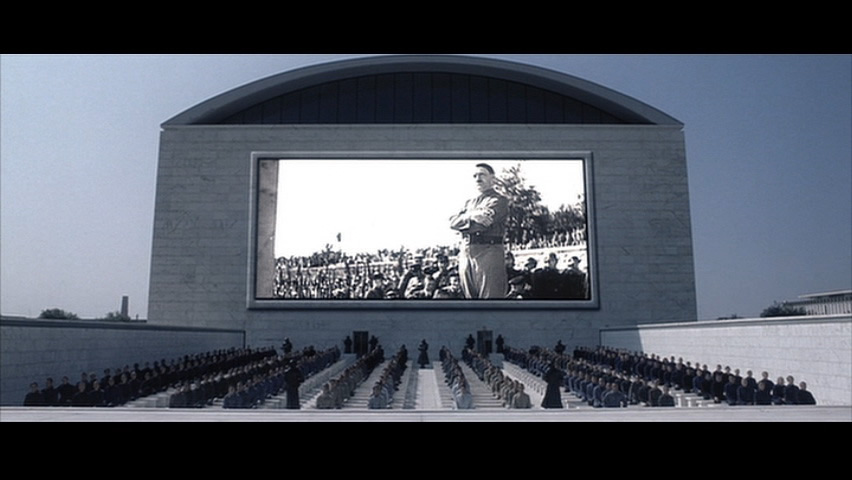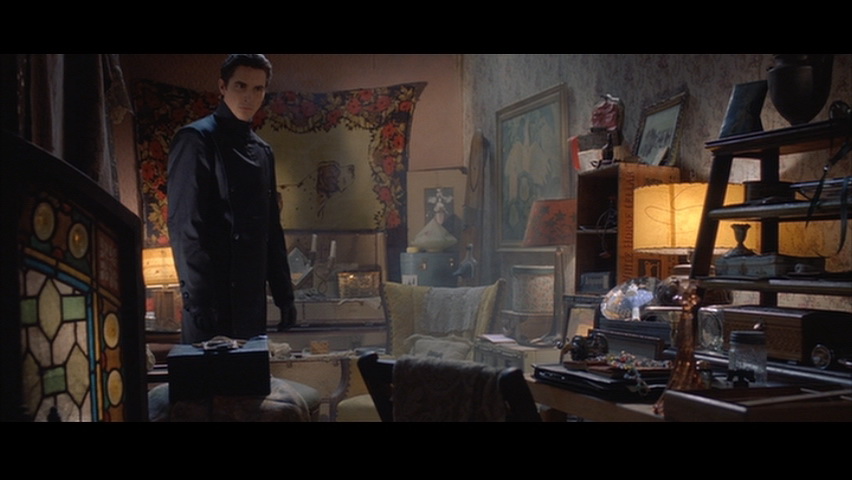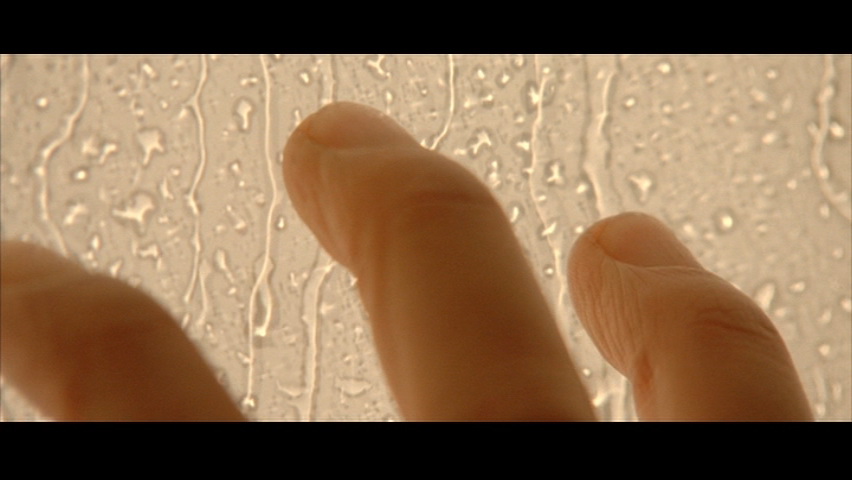Part 2
Equilibrium (2002)
Kurt Wimmer's Equilibrium (2002) has the most dichotomous architecture of these three films. The aesthetic of the 'official' world is intensely controlled and largely bare drawing directly from the classically-inspired architecture of the Nazi regime in Germany and the Fascist regime in Italy in the mid 20th century. The director goes so far as to show Nazi propaganda films with very similar architecture on screens within the fictional world allowing the viewer to make direct comparisons. Large flat planes, smooth columns, symmetry and repetition are features of the architectural style associated with fascism. Views are long and dramatic emphasizing the grandeur of the architecture, and thus, the regime, and reducing the individual to an inconsequential speck within the set. The lack of detail and texture discourages physical contact with the architecture and minimizes evidence of human involvement in construction. The sets are evenly and cool-ly lit further reducing the detail in the construction and thus further depersonalizing them.
The architecture of the underworld, on the other hand, is familiar, personal, and sometimes verges on chaotic. The spaces are generally small and warmly lit in such a way as to reveal detail while inducing a sense of mystery and wonder in both the main character and the viewer. They are crowded with contraband artifacts full of variety, colour, and texture. The contraband, and the architecture, is almost invariably worn - which is evidence of human contact with the objects. In this fictional society, emotion has been criminalized and along with it all artifacts, including architecture, which might induce an emotional response. The treacherous expression of feeling is repeatedly represented through touch, particularly the caressing of ornamental objects and architectural detail.
The architecture of the official world clearly prioritizes the social over the unsocial; the group over the individual. The individual is insignificant within the monumental architecture while the well-ordered group is a natural addition. Furthermore, personal privacy is extremely limited due to expansive empty spaces which facilitate surveillance. Personal contact is naturally limited due to a lack of appropriately-scaled spaces in which to pause and interact with other people. This lack of interaction between people, deliberately contrived by the authorities in this fictional world in the name of eliminating conflict, has had the devastating consequence of also eliminating the ability for society to come to a natural balance between the needs of the group and the needs of the individual.
 |
 |
 |
Fascist Architecture on Screen |
Contraband Hiding Place |
The Desire to Touch Detail |